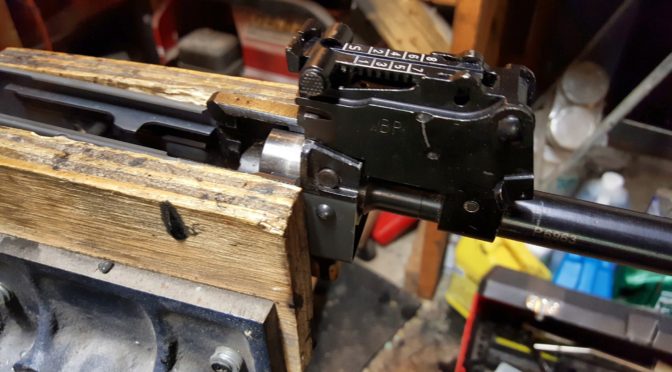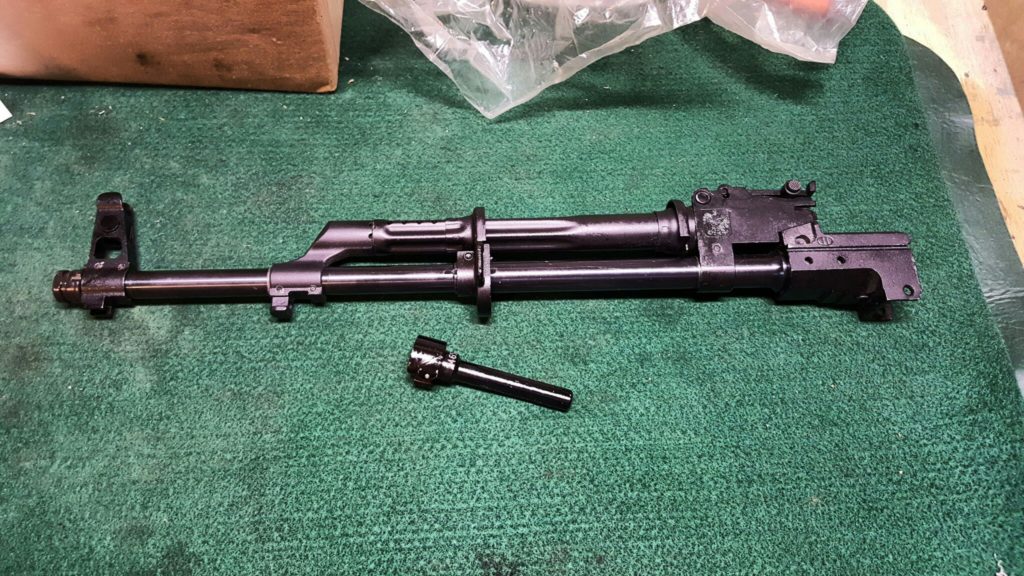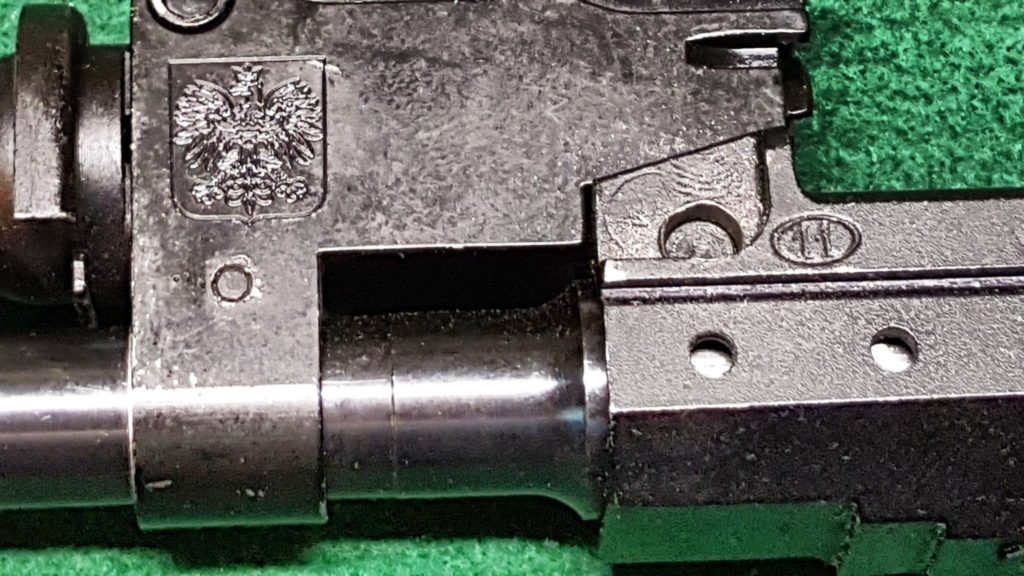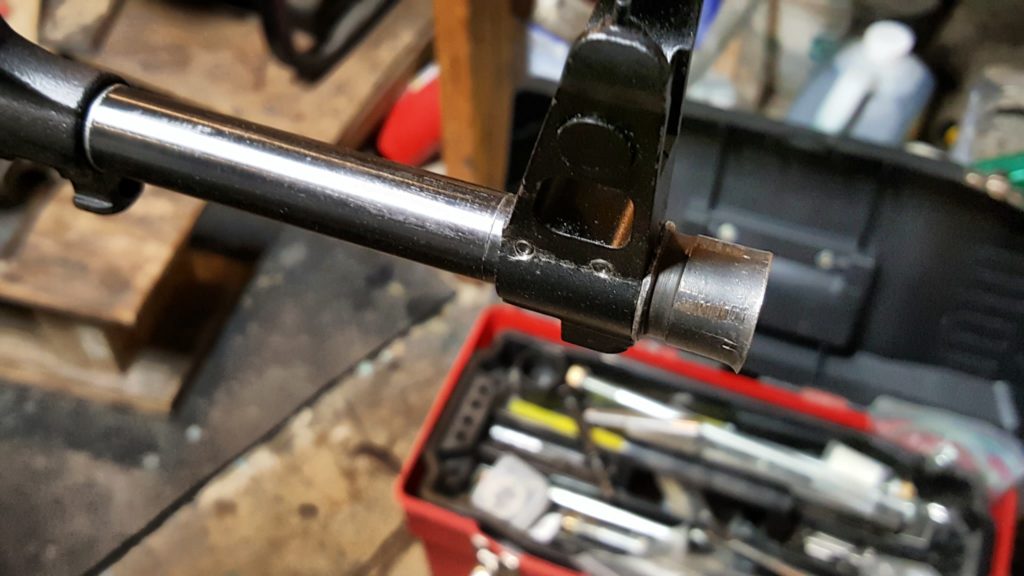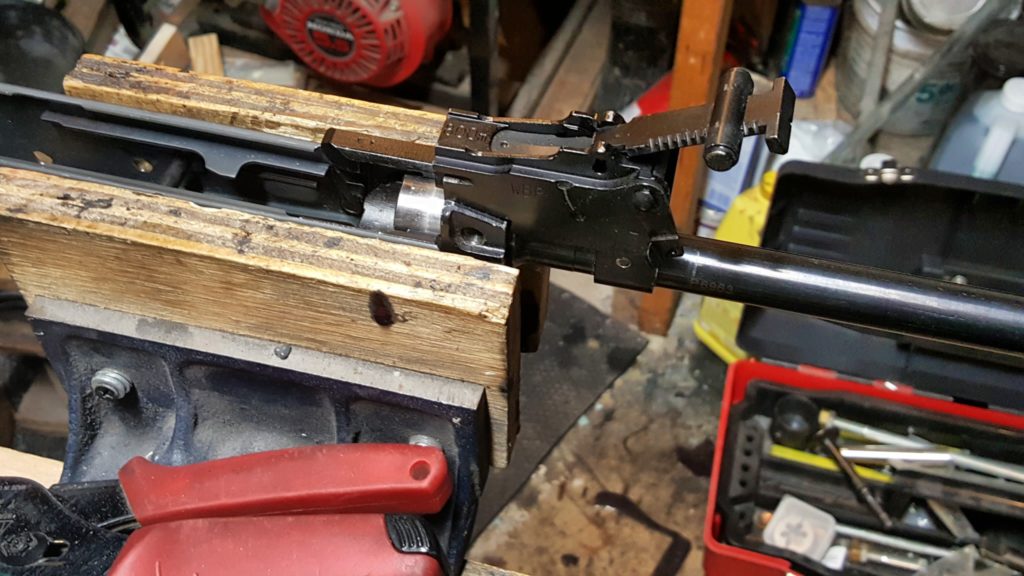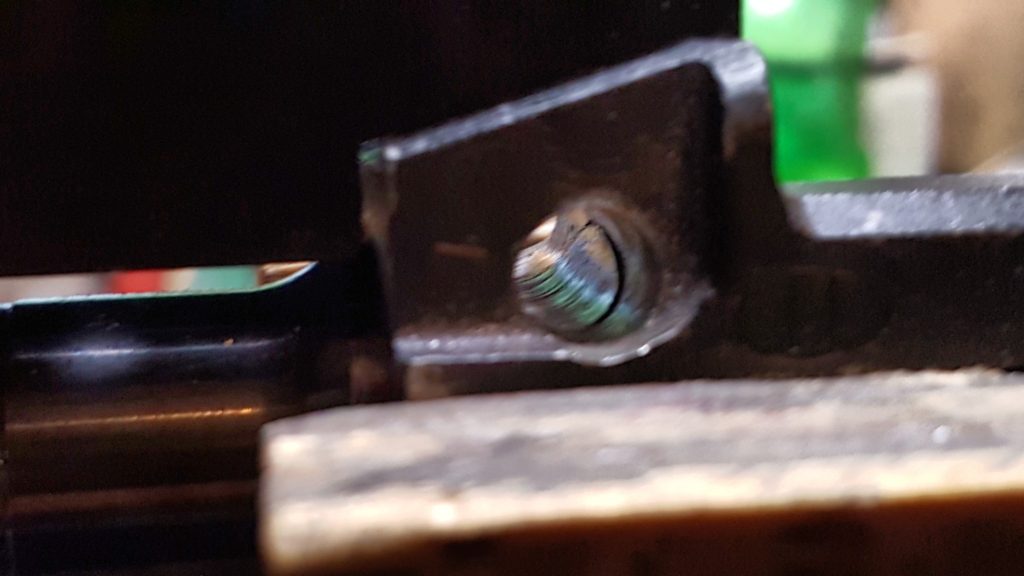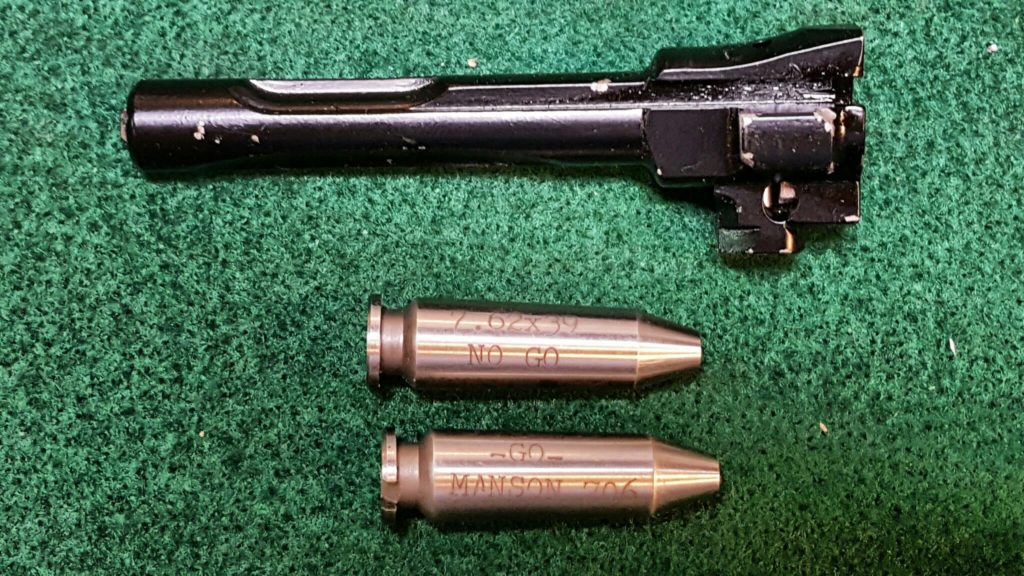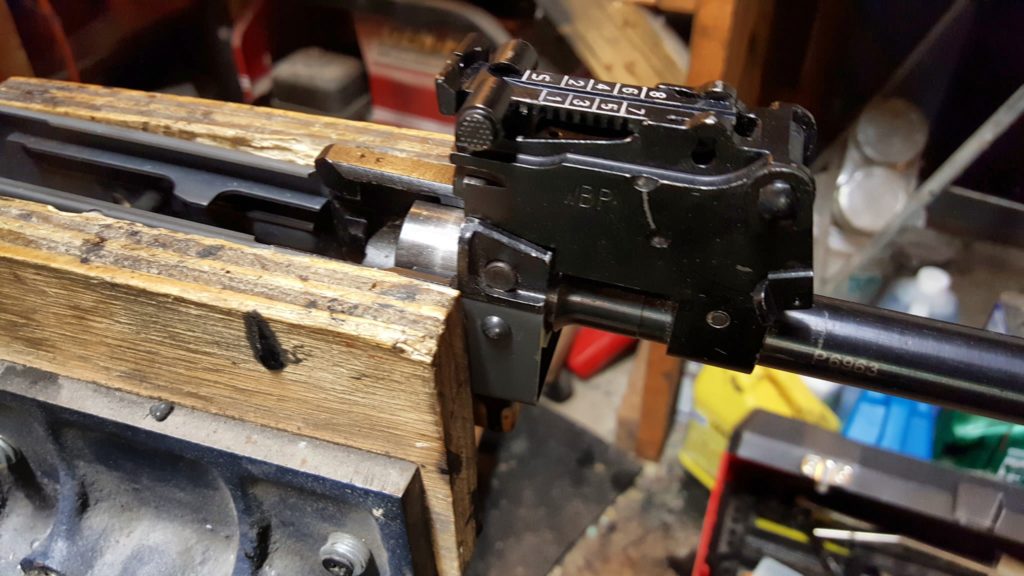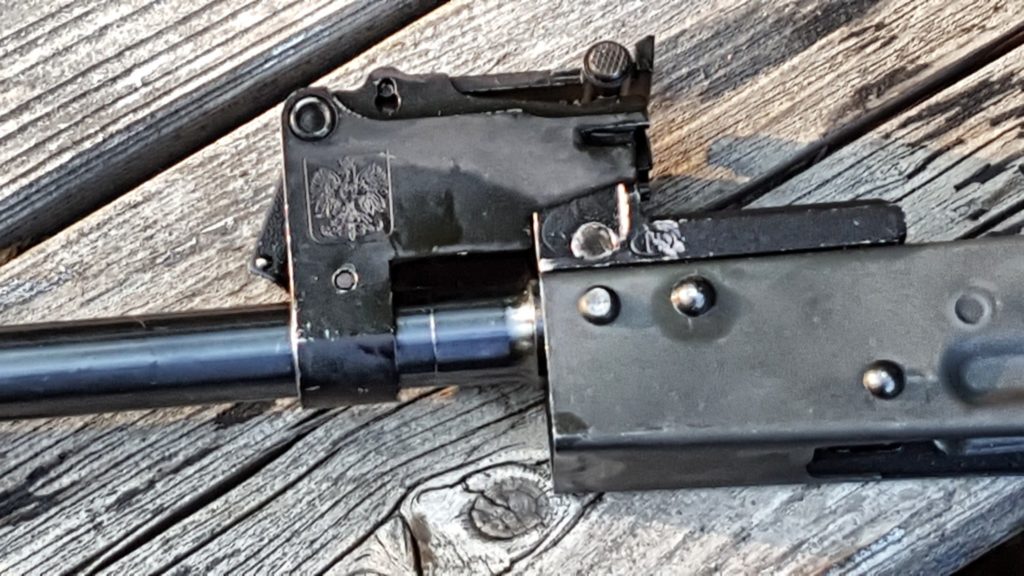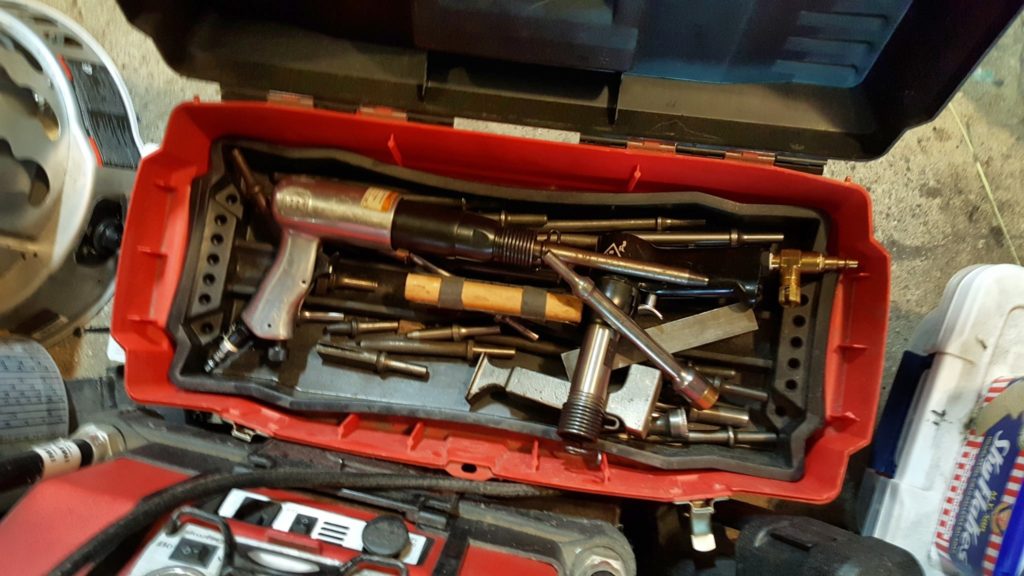At this point we are getting into the home stretch. Once the barrelled kits dried up, virgin barrels required a fair amount of work to install the blocks. Personally, I never really enjoyed doing the blocks so now that completed barrel assemblies are available again, I’ll happily leave that work to someone else.
One quick comment on the WBP kit – I really like the crest on the rear sight block (RSB). I didn’t expect it and it is so cool.
There are many methods to install a barrel – I have used two – my 20 ton press with an AK-Builder barrel jig and my IR air hammer. Of the two, I mainly use the air hammer now and that is what I will document in this post. Note, the AK-builder jig works just fine – I have found the IR 117 air hammer to be faster as I don’t have to do as much set up work.
You don’t have to use the same IR as me but I would recommend you get either a bigger air hammer like mine or at least a 4x air riveter. An integral regulator in the gun helps with control.
Three Critical Tips Before You Begin
#1 – If you are new to air hammers, practice before you work on your rifle. They jump around and you need to get a feel for how how control them.
#2 – Mr air hammer is not your friend. Wear eye protection and do not get skin anywhere near punches, etc. They can pinch the hell out of your skin. I’ve had my fair share of blood blisters and cuts from not paying attention or being in a rush over the years.
#3 – DO NOT hammer right on your muzzle. The crown, or end of the barrel where the bullet exits, is the last thing to touch the bullet. If you somehow deform the crown you will negatively impact accuracy and you also risk your threads. Use protection 🙂 I’ll detail that below – I use an old cut down muzzle brake as a protective cap.
Installing the Barrel
To install a barrel, I first install an old slant brake that I ground flat to protect the threads. I have not used a muzzle nut because they do not seem to offer much protection to the front of the muzzle – they are mainly designed to protect the threads. With the ground down slant brake, there is a plenty of material in front of the muzzle to protect it. 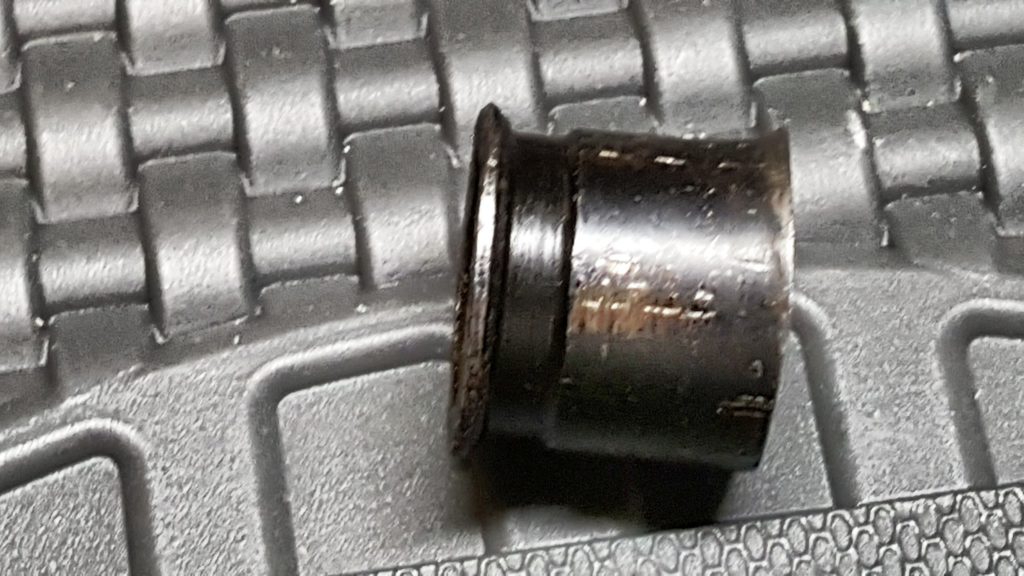
You can see how it has mushroomed over time but that’s fine. I’ve used it a ton and if I ever have a problem, I’ll chuck it and make another.
My best guess is that it came out of a Romanian G kit years ago. I have a bunch of oddball parts like this that got replaced by US parts for the sake of 922r compliance. You can use any slant brake you want – just grind the slant off so you have a flat surface to hammer on.
I thread the converted brake / muzzle protector all the way back on the barrel to engage all the threads possible and back it right against the front sight block (FSB). The idea is that you want the threads to take the impact and not the muzzle.
To start the installation, I push the barrel assembly into the trunnion and tap it with a big ball pein hammer. I keep sighting down the rear sight block (RSB) making sure it is true. At the point, you can use a rubber mallet or other non-marring mallet to tap the RSB and angle the barrel slightly one way or the other to course correct. It is really, really important to get the alignment right at the start. You will not be able to adjust it once you get very far in. If it turns out you have alignment problem later, I would recommend driving the barrel assembly out and starting over.
To do the actual driving, I use the IR 117 with the brass peening hammer attachment. I put the brass hammer face right on the converted slant brake and drive it in. I keep checking the barrel pin hole to make sure I stop just short of the final location and that it is aligned. If the surfaces are not aligned, I would drive the barrel back out and start over. In this next photo, you can see I stopped just short of where I need to be.
Now this particular kit was a headspaced Polish WBP kit and I had checked headspace before I removed the barrel. If I needed to set the headspace, I would start checking it somewhere around here.
At this point, I drive the barrel in the rest of the way by tapping the end with a big ballpein hammer – or any BFH will do 🙂 It really doesn’t take a ton of energy. You want to tap and test over and over. Don’t get impatient and try and drive it in all at once or you risk overshooting where you want to be. If you do overshoot, it’s going to take some time and you need to make that longer barrel backout tool and either use your press or your air tool (I’d use my IR 117) and push it back out just enough to then fine tune the location.
Do not use headspace gauges as barrel stops. You may know this but just in case you don’t – gauges are precision instruments and you only install them to test the headspace and *not* as a way to stop travel. I’ve heard of guys doing that and, for a change, I wasn’t one of them 🙂
Assuming you checked and confirmed the headspace before you began, where to stop is easy. Once the channel is clear and you have one nice continous path from one side of the trunnion to the other it is time to reinstall the pin.
Installing the barrel pin
With I do is start the pin with a big ball pein hammer and then drive it in the rest of the way with an old rivet set that I use just for this purpose. Years ago I bought a ton of used 0.401 shank rivet sets and rivet tools off eBay for a very reasonable price. I use one that covers the pin nicely and drive it right in and let me tell you, it goes in fast. You can stop short and drive it in the test of the way by hand if you want. I tend to just drive it right into place with the air tool.
By the way, I’ve accumulated a number of rivet tools and bucking bars over the years. Here’s a quicksnap shot of my toolbox:
That’s it – done. I hope this helps you out! In the next post we will go over the unique Beryl optics rail and installing the furniture.
By the way, here are used rivet tools currently on eBay. Be sure the shank size matches your air hammer or air riveter (all of mine are 0.401″ for example)
If you find this post useful, please share the link on Facebook, with your friends, etc. Your support is much appreciated and if you have any feedback, please email me at in**@*********ps.com. Please note that for links to other websites, we are only paid if there is an affiliate program such as Avantlink, Impact, Amazon and eBay and only if you purchase something. If you’d like to directly contribute towards our continued reporting, please visit our funding page.
